Mold is a type of fungi that can grow anywhere there is moisture, causing damage to homes and negatively impacting indoor air quality. It is essential to be aware of where mold commonly occurs in homes to prevent its growth and spread. Moisture is the primary factor that contributes to mold growth, so controlling it is critical to preventing mold.
In this article, we will discuss common locations of mold growth in homes, including bathrooms, kitchens, basements and crawl spaces, attics, laundry rooms, bedrooms, living rooms, HVAC systems, window sills and frames, and the exterior of homes. We will also provide prevention tips to help you keep your home mold-free and discuss the importance of professional mold removal in severe cases.
Bathrooms
Bathrooms are one of the most common areas for mold growth in homes. This is due to the frequent use of showers, bathtubs, and sinks which can create moisture and lead to mold growth. It’s important to take preventative measures to reduce moisture and prevent mold from forming.
Prevention Tips
To prevent mold growth in bathrooms, consider the following:
- After showering or bathing, use a squeegee or towel to remove excess moisture from walls and surfaces
- Run the bathroom fan during and after showering to reduce moisture in the air
- Fix any leaks from faucets or pipes promptly
- Regularly clean and disinfect bathroom surfaces
- Consider using a dehumidifier if your bathroom tends to be very humid
Signs of Mold in Bathrooms
If you notice any of the following signs of mold growth in your bathroom, it’s important to take action promptly:
- Black or green spots on walls, ceilings, or tile grout
- Musty or earthy odor
- Persistent moisture or condensation on surfaces
- Allergic symptoms, such as sneezing, coughing, or itchy eyes
If you suspect mold growth in your bathroom, it’s important to address it promptly to prevent further damage and potential health risks.
Kitchens
Kitchens are another area of the home where mold growth can occur due to the presence of moisture. Sinks, dishwashers, and refrigerators can all produce moisture that can lead to mold growth if not properly ventilated. It’s essential to vent moisture outside the home and keep surfaces dry to prevent mold growth.
| Possible Causes of Mold in Kitchens | Prevention Tips |
|---|---|
| Sinks and dishwashers | Use a kitchen exhaust fan or open a window while cooking or washing dishes to vent moisture outside. Dry surfaces after use to prevent moisture buildup. |
| Refrigerators | Ensure the refrigerator has proper ventilation and keep drip pans clean to prevent mold growth. Check for leaks and address them promptly. |
To prevent mold growth in your kitchen, it’s also important to ensure your ventilation system is properly functioning. Regularly clean and maintain your range hood, exhaust fan, and any other kitchen ventilation systems to ensure they are effectively removing moisture from the air.
Basements and Crawl Spaces
Basements and crawl spaces are prone to mold growth due to their tendency to be damp and poorly ventilated. In fact, according to the Environmental Protection Agency (EPA), mold is often found in basements and crawl spaces due to their low levels of natural light and inadequate ventilation.
If your home has a foundation issue, water can seep into the basement or crawl space, creating the perfect breeding ground for mold. The dampness can also cause the growth of mildew, which can trigger allergies and other respiratory problems.
To prevent mold growth in basements and crawl spaces, it’s important to address any foundation issues and ensure proper ventilation. This can be done by installing a dehumidifier or air conditioner, or by adding vents or windows to improve air circulation.
In addition, it’s important to keep these areas clean and dry to prevent mold growth. This includes regularly checking for leaks and moisture, and promptly addressing any issues that arise.
Prevention Tips for Basements and Crawl Spaces
To prevent mold growth in basements and crawl spaces, follow these tips:
- Ensure proper ventilation and air circulation
- Address any foundation issues to prevent water seepage
- Clean and dry these areas regularly
- Install a dehumidifier or air conditioner
- Use mold-resistant materials, such as drywall and paint, in these areas
Attics
Attics are often a prime location for mold growth due to insufficient insulation and ventilation, as well as roof leaks. When moisture enters the attic, it can promote the growth of mold on the surfaces of the roof, walls, and floors.
Insulation
Proper insulation is key to preventing mold growth in the attic. Insulation helps maintain a consistent temperature and prevent moisture from entering the attic. It’s important to ensure that insulation is installed correctly and covers all surfaces to avoid any gaps where moisture can seep in.
Ventilation
Proper ventilation is also crucial for preventing mold growth in the attic. Ventilation allows for air to flow through the attic, reducing moisture levels and preventing mold growth on surfaces. Attic ventilation systems should be inspected and maintained regularly to ensure they are functioning properly.
Roof leaks
Roof leaks are another common cause of mold growth in attics. It’s important to address any leaks as soon as they are noticed to prevent further moisture from entering the attic and promoting mold growth. Regular inspections of the roof should also be conducted to catch any potential leaks early on.
Prevention Tips
- Ensure proper insulation is installed in the attic.
- Maintain proper ventilation in the attic.
- Regularly inspect the roof for any leaks.
Kitchens
The kitchen is one of the most common areas for mold growth in a home. Moisture from sinks, dishwashers, and refrigerators can create the perfect environment for mold to grow. Proper ventilation is crucial to reducing moisture and preventing mold growth in the kitchen.
Make sure your kitchen has adequate ventilation. Install an exhaust fan or range hood that vents outside to remove moisture from cooking and washing dishes. Keep the fan on during and after cooking or running the dishwasher to allow moisture to escape.
| Prevention Tips: |
|---|
| Fix any leaks under the sink or around the dishwasher promptly |
| Wipe up spills immediately to prevent moisture from accumulating |
| Ensure your refrigerator is properly sealed and not leaking water |
| Regularly clean and maintain your kitchen appliances |
It’s important to keep your kitchen clean and dry to prevent mold growth. Don’t let dirty dishes pile up in the sink and wipe down countertops after cooking or using the sink. Regularly inspect the area under the sink and around the dishwasher for leaks or standing water.
If you do find mold in your kitchen, it’s important to take care of it quickly to prevent it from spreading. Use a mold-killing solution to clean the affected area and consider hiring a professional to ensure the mold is completely removed.
Bedrooms
Mold growth in bedrooms can be a serious issue, as it can lead to health problems for those who spend a lot of time in their bedrooms. Mold in bedrooms is often caused by high humidity levels and poor air circulation, which can create the perfect environment for mold growth.
Windows
Windows can be a major source of moisture in bedrooms, particularly during the colder months when condensation can form on the glass. It’s important to wipe down windows regularly to prevent the buildup of moisture, and to make sure that windows are properly sealed to prevent drafts.
Humidity Control
Humidity control is key to preventing mold growth in bedrooms. Use a dehumidifier if necessary to keep humidity levels below 60%. Consider purchasing a hygrometer to monitor humidity levels and make sure they stay within a safe range.
Air Circulation
Proper air circulation is also essential in preventing mold growth in bedrooms. Open windows whenever possible to allow fresh air to circulate, and consider using a fan to improve air circulation if necessary.
Cleaning
Cleaning is important in preventing mold growth in bedrooms. Regularly vacuum carpets and upholstery, and dust surfaces to reduce the buildup of mold spores. Use a HEPA filter in your vacuum to ensure that mold spores are properly filtered out of the air.
Kitchens
Kitchens are another common area for mold growth in homes. Moisture from various sources can accumulate in the kitchen and lead to mold growth if not properly addressed. Here are some common sources of moisture in kitchens:
| Source of Moisture | Prevention Tips |
|---|---|
| Sinks | Check for leaks and repair them promptly. Wipe down the sink and surrounding area regularly to prevent standing water. |
| Dishwashers | Run the dishwasher with a full load to conserve water, and make sure the dishwasher is properly sealed. Regularly clean the dishwasher to prevent buildup of food debris. |
| Refrigerators | Regularly check and clean the drip pan, where condensation and moisture can accumulate. Leave space between the back of the refrigerator and the wall to allow for proper air circulation. |
Proper ventilation is also important in the kitchen to reduce moisture buildup. Use an exhaust fan or open windows when cooking or washing dishes. Regularly clean and replace air filters in ventilation systems to ensure proper air flow.
By addressing sources of moisture and ensuring proper ventilation, homeowners can prevent mold growth in their kitchens and maintain a healthy indoor environment.
HVAC Systems
Mold growth in HVAC systems can be a common problem, especially in humid environments. Mold can grow in air ducts and filters, and then circulate through the entire home, causing health problems for occupants.
To prevent mold growth in HVAC systems, it is important to regularly clean and maintain them. This includes changing filters regularly and having air ducts cleaned by a professional.
It is also important to ensure that the HVAC system is properly sized for the home. An oversized system can lead to poor dehumidification and increased moisture levels, which can contribute to mold growth.
Signs of Mold in HVAC Systems
There are several signs that mold may be growing in your HVAC system. These include:
- Visible mold growth on the air vents or ducts
- Musty or moldy odors coming from the vents
- Increased allergy or asthma symptoms when the HVAC system is turned on
If you notice any of these signs, it is important to have your HVAC system inspected by a professional to determine the extent of the mold growth and to develop a remediation plan.
Window Sills and Frames
Mold growth can be a common issue on window sills and frames, especially in areas with high humidity levels or poor ventilation. Condensation on windows can also contribute to mold growth if left unaddressed.
Prevention Tips:
- Clean window sills and frames regularly to remove any moisture or dirt buildup that may contribute to mold growth.
- Seal any gaps or cracks around windows to prevent moisture from seeping in.
- Consider using a dehumidifier in areas with high humidity levels.
- Use window coverings, such as blinds or shades, to help control condensation.
| Do: | Avoid: |
|---|---|
| Regularly clean window sills and frames to prevent mold growth. | Ignoring any signs of mold growth on windowsills or frames. |
| Address any gaps or cracks around windows to prevent moisture from seeping in. | Leaving condensation on windows unaddressed. |
| Control humidity levels in the room with a dehumidifier. | Allowing wet or damp items to sit on windowsills or frames. |
| Use window coverings to help control condensation. | Keeping windows closed all the time, especially in warmer weather. |
Exterior of Homes
Mold growth on the exterior of homes can often be attributed to poor landscape drainage, clogged gutters, and downspouts that direct water towards the home’s foundation. Proper landscaping and regular maintenance of gutter systems can prevent mold growth on the exterior of homes.
Landscape Drainage
One of the most common causes of mold growth on the exterior of homes is poor landscape drainage. If your yard slopes towards your home, rainwater and other types of moisture can seep into the foundation and create the perfect environment for mold growth.
To prevent this, make sure your yard slopes away from your home. If your yard is already sloping towards your home, consider hiring a professional landscaper to regrade your yard.
Gutters and Downspouts
Clogged gutters and downspouts can direct water towards your home’s foundation, causing moisture to seep into your home and create the perfect environment for mold growth.
Make sure to clean your gutters and downspouts regularly to prevent clogs. You can also install gutter guards to prevent debris from collecting in your gutters.
Landscaping
Proper landscaping can also help prevent mold growth on the exterior of your home. Try to keep plants and shrubs at least a foot away from your home’s foundation to prevent moisture from seeping into your home.
You can also install landscaping features like French drains or dry wells to help redirect water away from your home’s foundation.
Prevention Tips
Preventing mold growth in your home is essential for maintaining indoor air quality, preventing structural damage, and avoiding health problems. Here are some expert prevention tips to keep your home mold-free:
- Control moisture levels: Mold thrives in moist environments, so it’s important to control moisture levels in your home. Use dehumidifiers in damp areas, fix any leaks promptly, and clean up spills and standing water immediately.
- Proper ventilation: Proper ventilation is key to preventing mold growth. Make sure your home is well-ventilated, especially in areas prone to moisture such as bathrooms, kitchens, and laundry rooms. Use exhaust fans or open windows to improve air circulation.
- Clean regularly: Regular cleaning is vital to preventing mold growth. Be sure to clean mold-prone areas such as bathrooms, kitchens, and basements regularly. Use a mold-killing solution to clean surfaces, and ensure that cleaning tools are kept clean and dry when not in use.
- Maintain household systems: Proper maintenance of household systems such as HVAC, gutters, and downspouts is crucial to preventing mold growth. Have your HVAC system professionally cleaned and maintained regularly, and clean gutters and downspouts frequently to prevent water buildup.
Additional Tips for Mold Prevention
Here are some additional tips for preventing mold growth in your home:
- Avoid carpeting in damp areas like basements and bathrooms.
- Use mold-resistant paint in areas prone to moisture, such as bathrooms and kitchens.
- Seal windows and doors properly to prevent condensation.
- Keep indoor humidity levels below 60%. Use a hygrometer to monitor levels and a dehumidifier if necessary.
- Ensure proper drainage around your home’s foundation to prevent water buildup.
Conclusion
Following these prevention tips can help you keep your home mold-free and ensure healthy indoor air quality. However, if you do notice mold growth in your home, it’s important to address it promptly to prevent further damage and health problems. Consider hiring a professional mold remediation company for safe and effective removal.
Professional Remediation
In cases of severe mold growth, it is essential to seek professional mold removal and remediation services. Attempting to remove mold yourself can be dangerous and may even cause the mold spores to spread further throughout your home, increasing health risks and property damage. Professional mold removal companies have the experience, knowledge, and equipment necessary to remove mold safely and effectively.
Professional remediation services typically include a thorough inspection of your home to identify the extent of the mold growth. The mold removal specialists will then use specialized equipment to contain the mold spores and prevent them from spreading to other areas of your home. They will also use specialized cleaners and disinfectants to remove the mold and prevent it from returning.
It is also important to have regular professional mold inspections to catch mold growth early and prevent it from causing further damage to your home and health. Professional mold inspectors have specialized tools and experience to identify mold growth in areas that may be difficult for homeowners to detect. Regular inspections can help catch mold growth early and prevent it from becoming a severe problem.
FAQ
Q: How can I tell if I have mold in my home?
A: Mold can often be identified by its musty smell and visible growth on walls, ceilings, and other household surfaces. If you suspect you have mold in your home, it’s important to have a professional mold inspection to accurately identify and assess the extent of mold growth.
Q: Which household items are prone to mold growth?
A: Any household item that is exposed to moisture, such as carpets, furniture, and clothing, can be prone to mold growth. It’s important to regularly clean and dry these items to prevent mold growth.
Q: How can I prevent mold growth in humid climates?
A: In humid climates, it’s important to control moisture levels in the home by using dehumidifiers and proper ventilation systems. Regular cleaning and maintenance of household systems, such as HVAC systems and gutters, can also help prevent mold growth.
Q: Can I remove mold myself?
A: While small areas of mold can often be removed with household cleaners, it’s important to have professional mold remediation for larger areas of mold growth or for mold that has spread to hidden areas, such as inside walls and floors. Professional remediation ensures safe and thorough removal of mold and helps prevent future growth.









